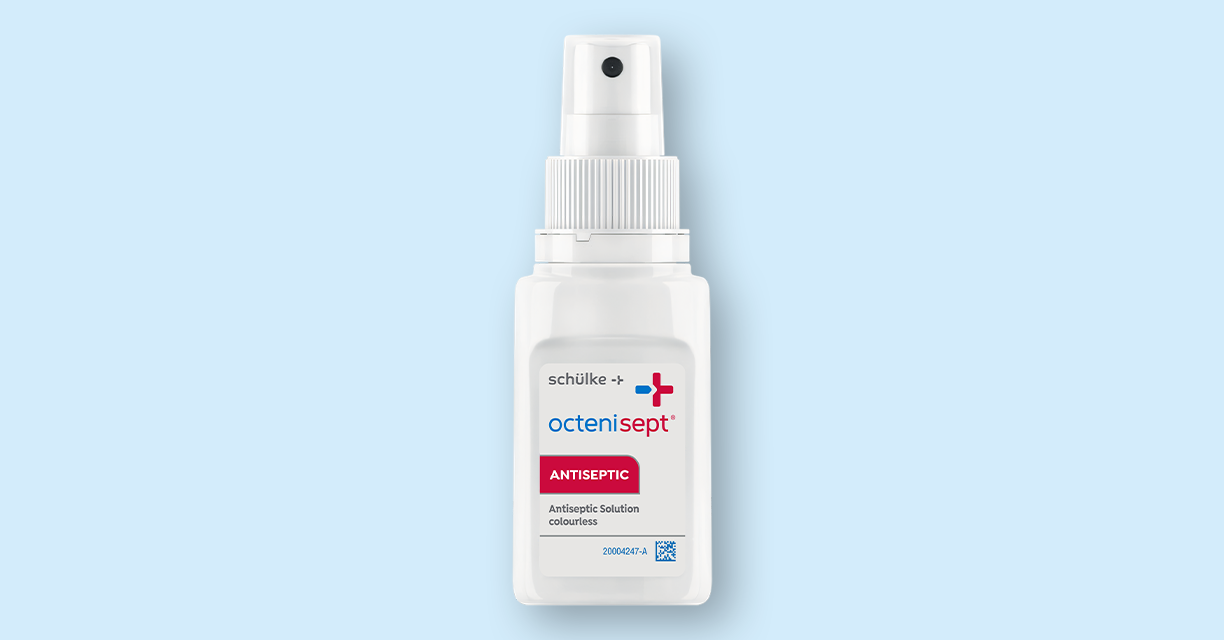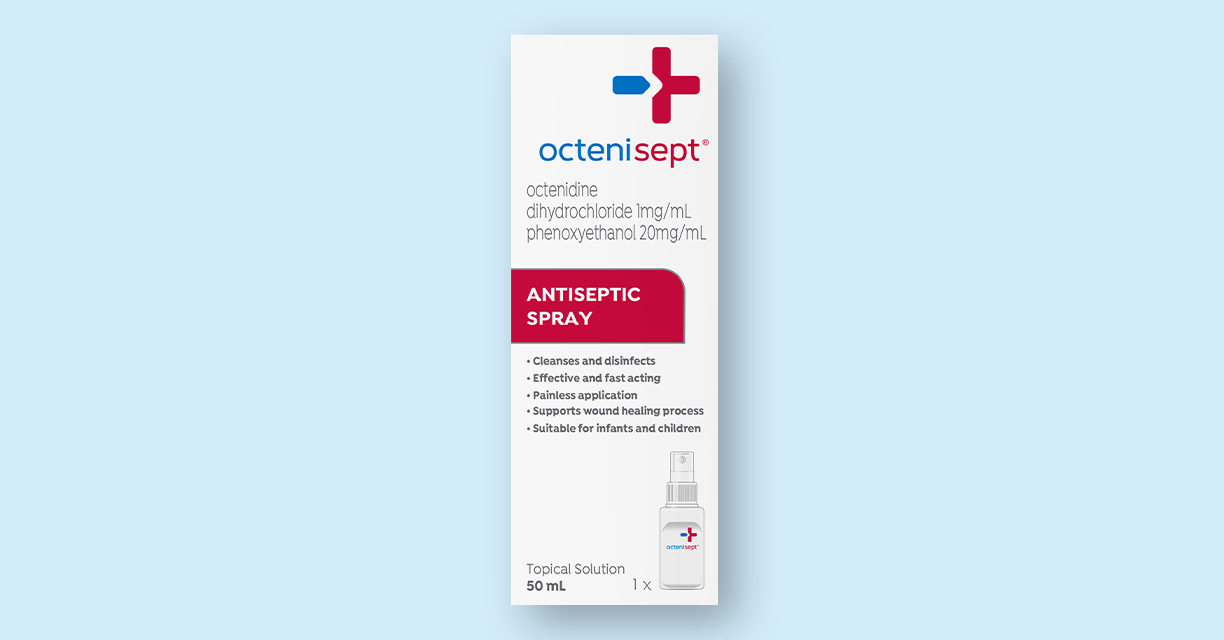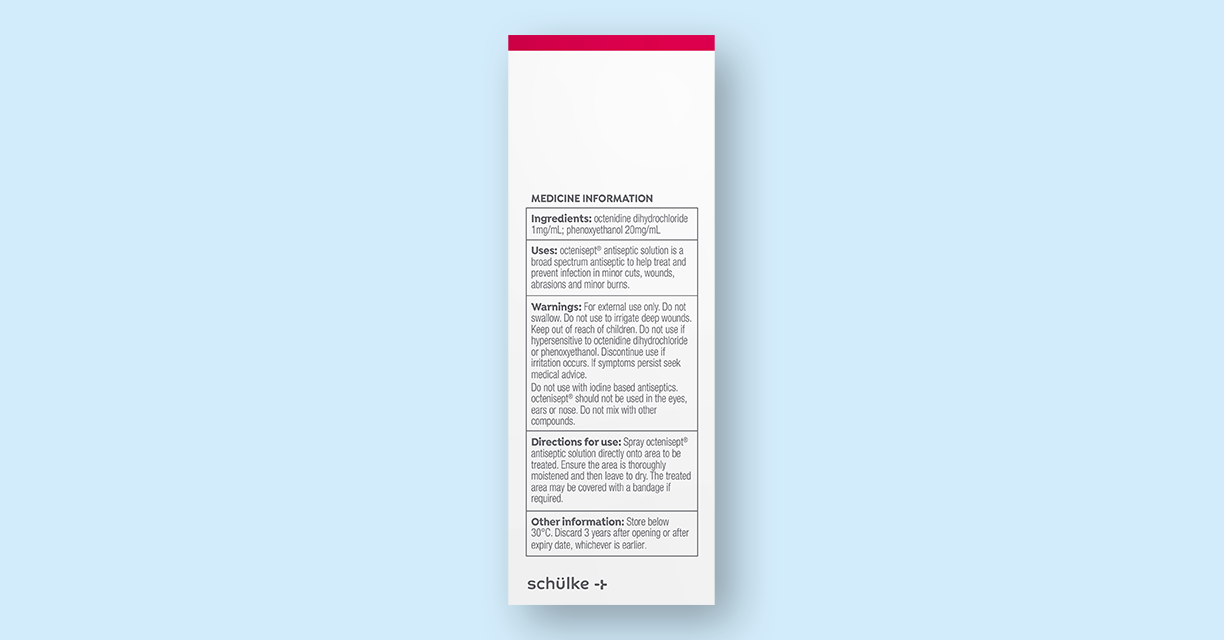octenisept® antiseptic wound spray
A modern antiseptic treatment that promotes painless application.
A modern wound spray antiseptic treatment that promotes fast and pain free application that help cleanse wounds.
octenisept® antiseptic wound spray is an antiseptic solution that has a unique combination of octenidine and Phenoxyethanol, which ensures a rapid and broad-based antiseptic effect, thus eliminating existing microbes and preventing infections, which helps the wound healing process without obstacles. This antiseptic wound spray solution is a modern, broad-spectrum and painless antiseptic suitable for traumatic, minor acute wounds, and minor second degree burns.
This antiseptic wound spray is also suitable for chronic wounds and postoperative wound care as per your doctor’s instructions.
octenisept® antiseptic wound spray is a clear solution, ensuring it won’t leave stains on clothing. It’s gentle on the skin and safe for use on children, making it an effective and mild option to aid the healing of wounds. The convenient design of the spray bottle allows it to function effectively from any angle, making it perfect for portable first aid, sports, and outdoor activities.
For further instructions on wound cleaning, you may read further here.
- Easy to Use Spray Bottle
- Protects effectively against wound infections
- Suitable for infants and children
- Fast and pain-free application
- Antiseptic Wound Cleansing
- Supports wound healing process
- Sensitive skin friendly
Learn more about
How to use octenisept® antiseptic spray
FAQ
A clean and cleansed wound is crucial for the best healing process. The octenisept® antiseptic wound spray is a convenient and effective solution for disinfecting minor wounds, preventing infection. Its active ingredient, octenidine hydrochloride, is known for its broad-spectrum antimicrobial properties, which makes it effective against a variety of pathogens including bacteria, fungi, and viruses. The spray form allows for a touch-free application, reducing the risk of contaminating the wound. It’s also generally well-tolerated and suitable for all ages, making it a versatile choice for family first aid kits.
Octenisept® antiseptic wound spray works by using its active ingredient, octenidine hydrochloride, to disrupt the cell membranes of microorganisms. This action effectively kills or inhibits the growth of a wide range of pathogens, including bacteria, viruses, and fungi, thus preventing infection in wounds. The spray form allows for easy and hygienic application directly onto the affected area, minimizing the risk of further contamination. This makes it an effective choice for cleaning and protecting minor acute wounds, cuts, and abrasions.
To use Octenisept® antiseptic wound spray effectively, first clean the entire wound area with water. Hold the spray bottle a short distance away and apply a thin layer directly to the wound. Ensure the area is completely covered. Avoid touching or rubbing the wound after application to minimize contamination.
Octenisept® antiseptic wound spray is suitable for a variety of minor wounds and chronic wounds. It can be used on cuts, abrasions, scratches, and small burns. It’s also effective for postoperative wound care and can be used as a preventive measure against infection in wounds. However, for deep, heavily bleeding, or severely infected wounds, or burns covering a large area, it’s important to seek medical attention.
Octenisept® antiseptic wound spray is generally well-tolerated. Its formula is designed to minimize irritation and allergic reactions. However, as with any topical product, individual reactions can vary. If you have sensitive skin, it’s advisable to do a patch test on a small area first. If no adverse reaction occurs, it can typically be used safely. If irritation or an allergic response does develop, discontinue use and consult a healthcare professional.
A wound spray, like Octenisept®, primarily acts as an antiseptic, disinfecting the wound to prevent infection. It’s applied as a mist, allowing for a touch-free and often painless application. In contrast, a wound healing ointment usually contains ingredients that promote the healing process, such as pain relievers or skin protectants, and may also have antimicrobial properties. Ointments provide a protective barrier and keep the wound moist, which can aid in faster healing.















